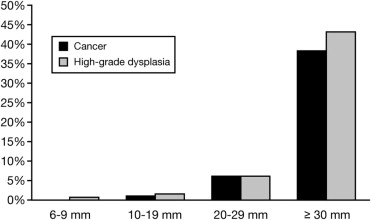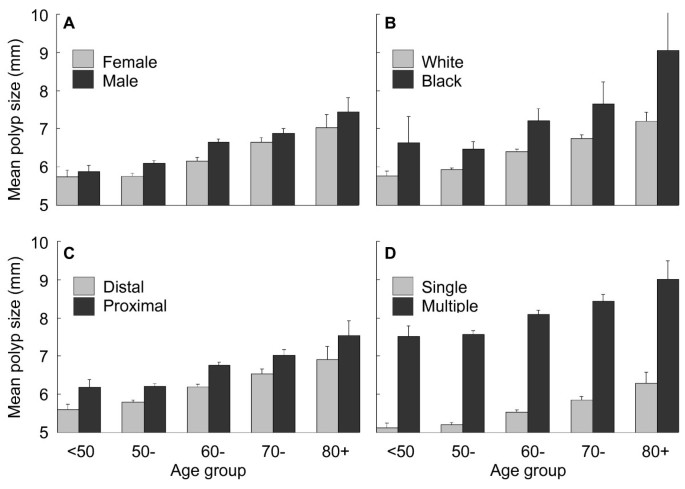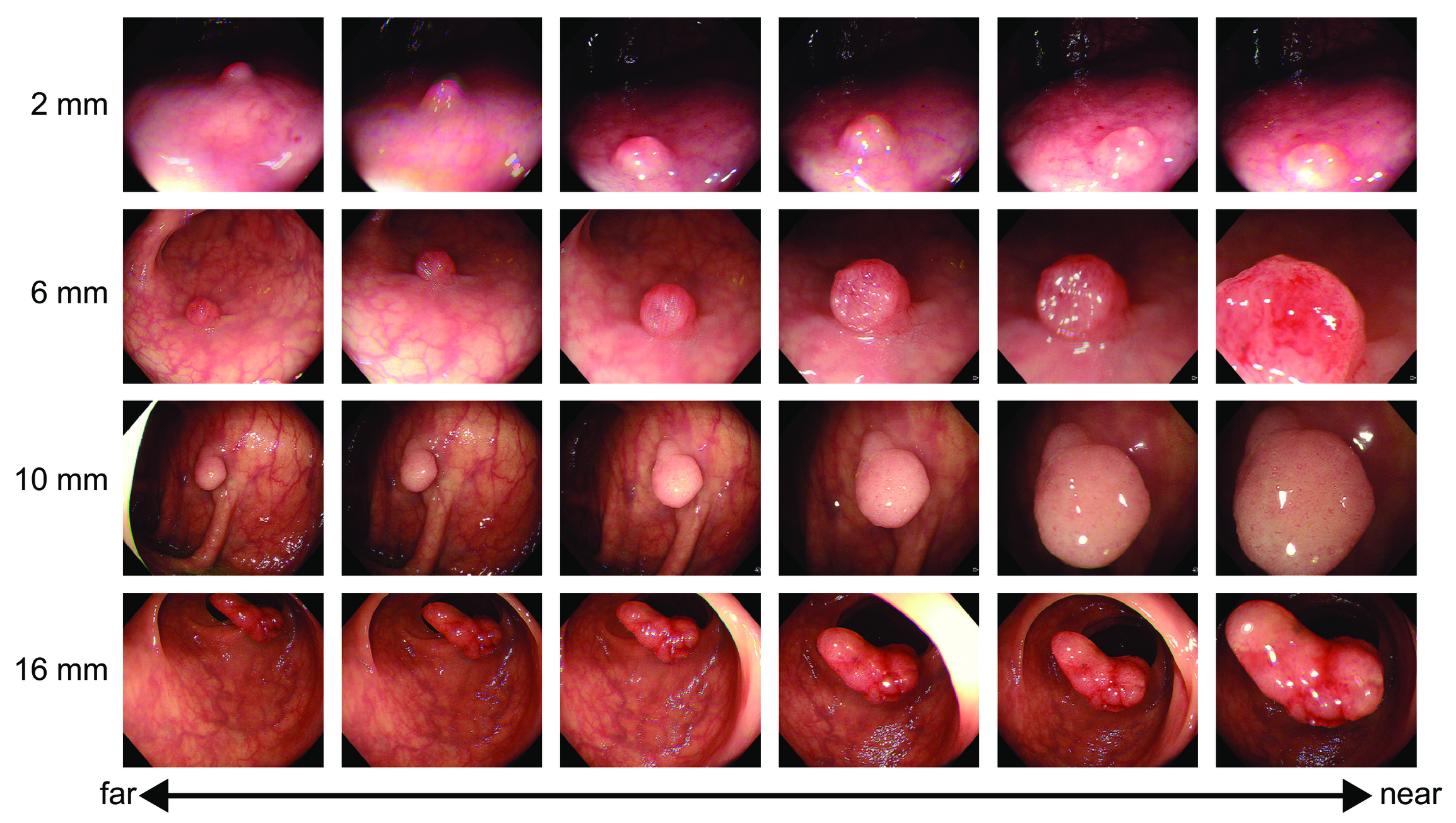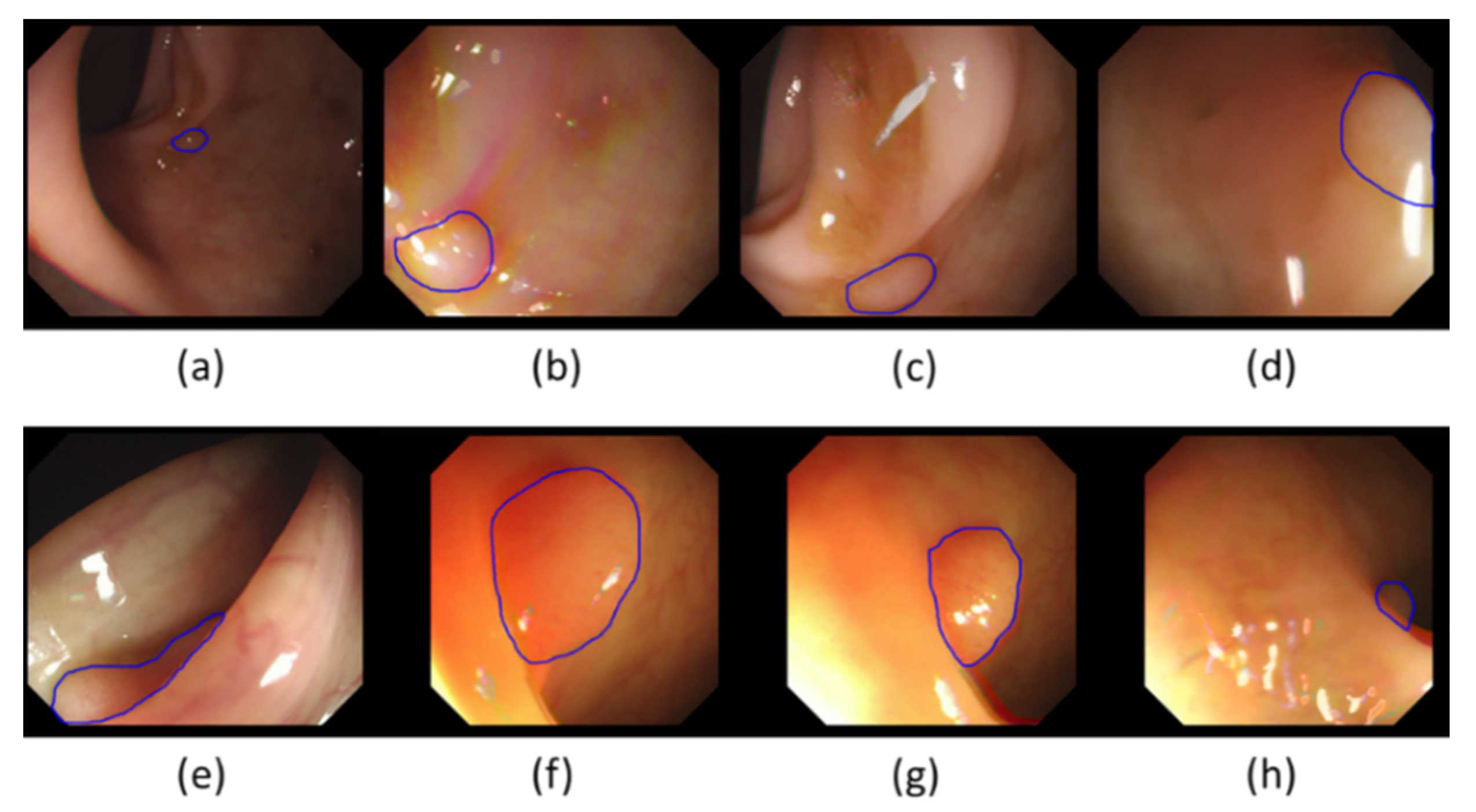Colon Polyp Size Chart
Small biopsy of a large polyp when.
Colon polyp size chart. In the entire data set more than half of all polyps were small measuring 5 mm. The larger the polyp becomes the bigger the risk of it developing into colon cancer. Sessile polyps are attached directly to the colon wall by a broad base.
The size of a polyp typically does make a difference. Polyps lumps on the smooth lining of the colon or rectum are increasingly common after. Answer 1 of 4.
But they also have the nasty habit that they degenerate in the base where they are attached to th. These polyps can be thought of as pre-cancers which is why it is. A polyp is a projection growth of tissue from the inner lining of the colon into the lumen hollow center of the colon.
Polyp that is 5mm or less in diameter. We know that Colon Cancer is the seventh cause of death and a very relevant Public Health IssueAnd if it is diagnosed in early stages the prognosis of cure is pretty goodOn Screening Coloniscopy we look for the polyps by tissue appearanceshaperigiditysurface irregularityrespectability and the sizePolyps less than 1cm have just over 1 chance of. 4 rows Approximately 1 of polyps with a diameter less than 1 centimeter cm are cancerous.
That risk increases significantly if the polyp is greater than 10 mm 1 cm. If you have. They can predict which patients are more likely to develop more polyps.
Research has shown the larger a colon polyp becomes the more rapidly it grows. Polyp that has a thickness that is less than that of the surrounding colon wall. Different types of polyps look different under the microscope.
Polyps are benign non-cancerous growths but cancer can start in some types of polyps. If the colonoscopy finds one or two small polyps 5 mm in diameter or. Polyp with a stalk between the polyp and the colon wall.
Here he explains how polyps vary by shape size and growth pattern. How soon you need to return for follow-up depends largely on the size of the polyps found in the first exam. Most polyps do not typically cause symptoms and they dont go.
In a retrospective analysis of endoscopic size measurements of more than 90000 polyps endoscopists performing colonoscopies in the UK bowel cancer screening program clustered their measurements of polyps at 5 mm 10 mm and 15 mm endings thereby having a preference for pleasing numbers 11. A CT colonographic study that demonstrates only one or two polyps 69 mm in size is categorized as C2 whereas one that depicts a 10 mm or larger polyp is categorized as C3. Polyps in which greater than 75-80 is villous are classified as villous All other polyps are tubulovillous adenoma Criteria can only be used reliably in polypectomy and resection specimen or tissue fragments large enough to assess the various proportions present At least tubulovillous.
After polyps are removed you will need to return for an additional colonoscopy. With increasing age smaller polyps became less common while larger polyps increased in frequency. The base is narrow.
They also are important because based on their size number and microscopic anatomy histology. Of course it depends on how often the person has a colonoscopy. Polyp that has a height that is less than one half the diameter of the polyp.
The average polyp may be 14 inch in diameter and 12 inch in length. Polyps less than 1 centimeter in size have a slightly greater than a 1 chance of becoming cancer but those 2 centimeters or greater have a 40 chance of transforming into cancer. Polypectomy procedure is determined by their size and localization.
The recommended management in this system is surveillance or colonoscopy for C2 and colonoscopy for C3. There is a 25 to 30 chance that a repeat colonoscopy will find additional polyps. Furthermore the fish eye lenses of colonoscopes distort.
The snare is encircled around the base of the polyp directly resting on the intestinal mucosa and the polyp is. Colon polyps are growths on the inner lining of the colon large intestine and are very commonColon polyps are important because they may be or may become malignant cancerous. Polyps growth slowly in diameter and in length.












:max_bytes(150000):strip_icc()/what-are-the-different-types-of-colon-polyps-796830_final_CORRECTED-64e07dd96131421792792347e2889028.png)






